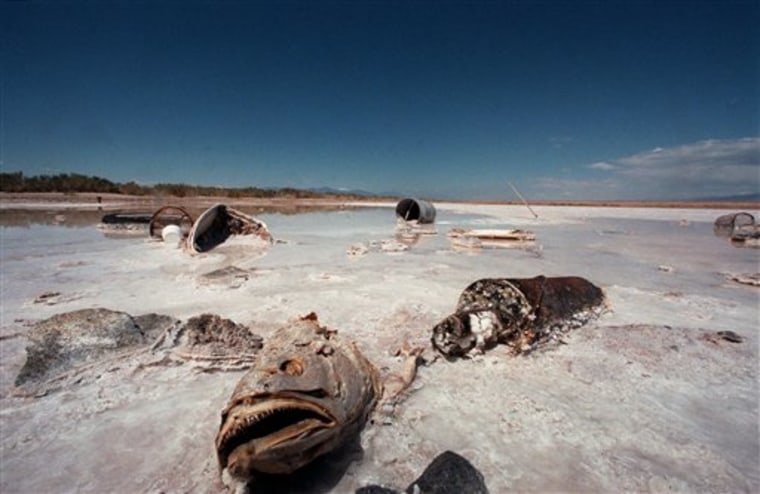A state government plan to save California’s largest lake calls for possible fixes including laying in rocks and constructing berms to manage areas high in saline.
After two years of often intense debate and research, state officials have finished an environmental report with ideas for saving the 35-mile long Salton Sea. The lake lies just north of El Centro in Southern California.
The lake and its plant and animal life have been suffering from a drop in water levels and increasing salinity. The Salton Sea is a key North American stopover for several species of migrating birds, including several types of geese and the endangered Yuma Clapper Rail.
The 3,000-page report, prepared by the state departments of water resources and fish and game, was released Thursday.
“We don’t have all the answers. There is still a lot of uncertainty out there as far as water quality issues,” said Dale Hoffman-Floerke, chief of the Colorado River and Salton Sea office for the Department of Water Resources. “But I think we’ve done a pretty good job ... with the information we have.”
Up to $5.9 billion in costs
Suggestions, called “alternatives” in the report, include projected construction costs that range from $2.3 billion to $5.9 billion.
The alternatives include ways to isolate areas of high salt content to help bolster plant and animal life, fostering habitats along the shoreline and increasing air quality by preventing more of the shoreline from being exposed.
Studies have shown that if nothing is done, the lake could shrink by more than 60 percent in the next 20 years, exposing dusty shoreline in a farming region already plagued by worsening air quality.
“It’s a huge public health threat,” said Michael Cohen, senior associate with the Pacific Institute, an Oakland-based think tank that has studied the lake. “Obviously we need to protect the birds that rely on the Salton Sea, but certainly people are a critical concern.”
The Salton Sea, which stretches across the Imperial and Riverside county line, was created in 1905 when floodwaters broke through a Colorado River irrigation canal.
Water pressure
Today, it faces an uncertain future, largely because of agreements to transfer water from the area to more heavily populated San Diego. Experts say the lake, already dependent on water flows to balance high salinity, is on a perilous track.
Cohen, who sits on the Salton Sea Advisory Committee, praised the state for completing the report. But he expressed disappointment with the offered alternatives.
“None of them are really going to fit the bill,” he said. “The way they are put together right now is not really the answer. But we could use the pieces and put them together in a different way, a way that is going to get local and environmental support.”
One of the largest stakeholders in the water body is the Salton Sea Authority, which is comprised of local officials.
Its proposed alternative, which is included in the state report, would create a recreational portion in the north with key habitat areas in the south. It would also feature an 11,000-acre freshwater reservoir.
After a 90-day public comment period, a “preferred alternative” will be submitted to the state Legislature.
